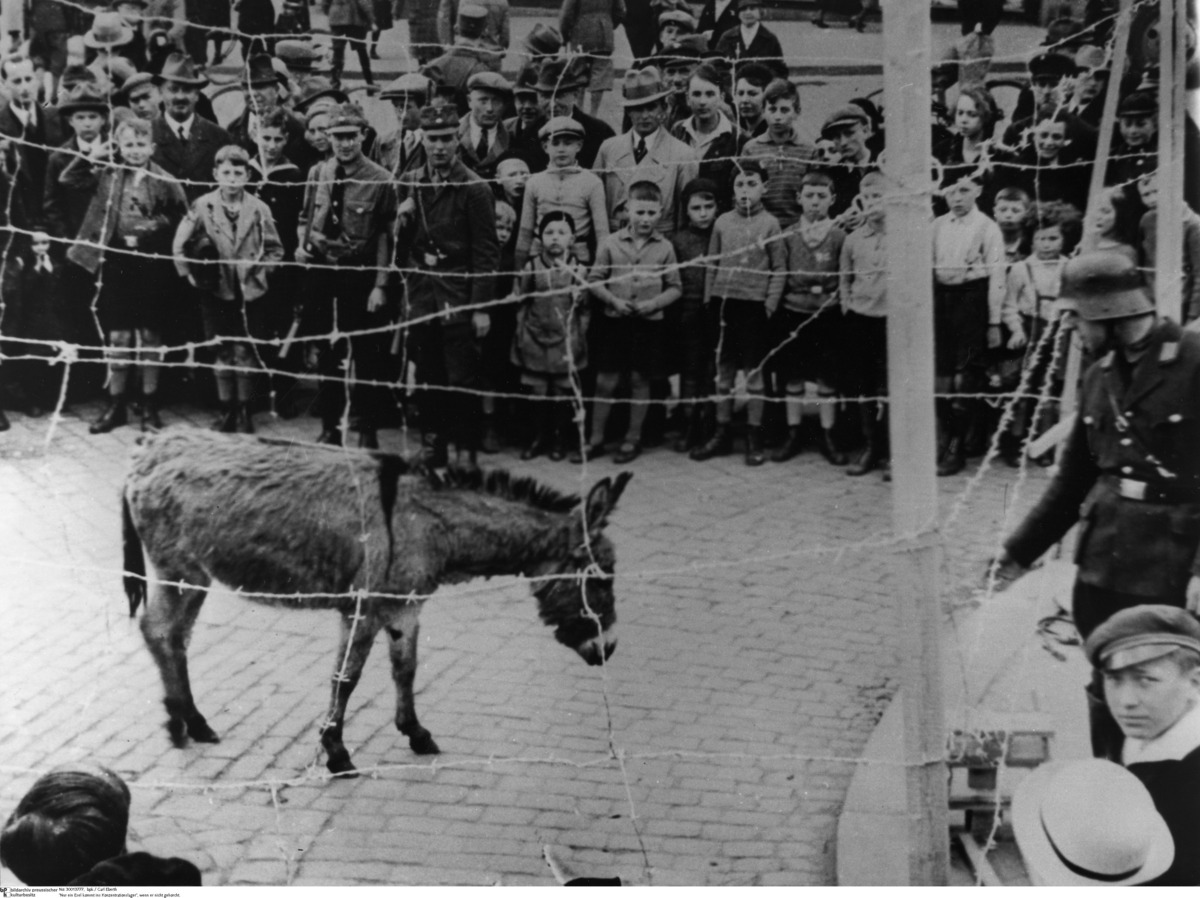Abstract
In the spring of 1933, Himmler, then Munich’s chief of police,
ordered the opening of the first concentration camp
[Konzentrationslager or KZ] in nearby
Dachau. The camp was to provide “protective custody” for Communists,
Social Democrats, and other political opponents of the regime. Soon a
network of camps stretched over all of Germany. After the war began, the
network extended into Nazi occupied territories as well. The camp system
was one of the most effective instruments of SS and police terror:
political as well as racial and social enemies of the regime disappeared
into them for days or even years without any form of legal protection.
The Nazi leadership made no secret of the existence of the camps. Scenes
such as the one shown below were supposed to send a message that inmates
were actually to blame for their own fate. The message in this case was:
“Only a stubborn mule ends up in a concentration camp.” People who
followed the rules supposedly had no cause for concern.
